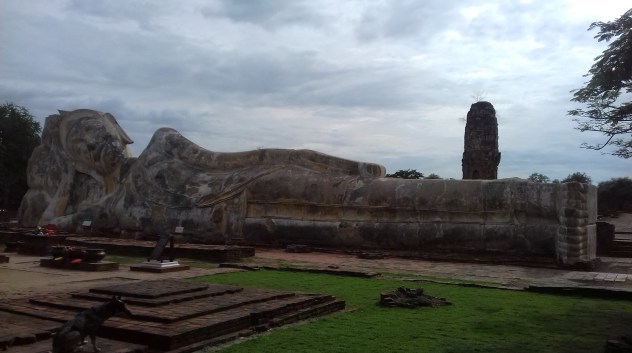Buddhism, Non-duality, and the Imminent Death of Ego
Obsession with non-self can be another form of attachment to ego, though caution should probably be advised, since our modern definition of ‘ego’ is so heavily influenced by that of Freud. The Buddha was a Jungian, haha, no, I’m serious, what with the mass subconscious and all that rap. But ‘ego’ makes the rounds regularly in modern Buddhist circles, even though ‘self’ or even ‘soul’ is probably the better translation of atta. The Buddha knew nothing of id and superego, not in the Freudian sense of the tripartite personality that includes ego.
But the concept of personality is one that should probably get more play in the Buddhist and non-dualistic press, since that offers a convenient compromise between dualism and non-dualism, or self and non-self. Because the original issue between the Buddhists and Brahmanists (early ‘Hindus’) was whether we had permanent enduring transmigratory selves, i.e. souls, or not, not whether we have personalities. And modern non-dualists have gone too far, IMHO, in proclaiming (yes, proclaiming) that since we have no souls, or selves, then we are essentially nothing.
Non-dualism may be the ‘wild west’ of spirituality right now, with many vague certainties, but I think that’s an accurate assessment. But the Buddha never said that, certainly. Why would he prescribe an Eightfold Path for non-entities with no free will and capable of nothing? He wouldn’t. He laid out an Eightfold Path for these transient personalities named Hardie and Jane and Bocephus, so that we would have a clue for what to do in our short stays in this planetary existence, regardless of whether anything goes on after or not.
His own sympathies seemed to be divided, too, since his early doctrine of anatta, non-self, is one of the pillars of Buddhism. The Hindu doctrine of reincarnation was picking up steam, though, and the Buddha seemed influenced by it, as were many, so much so that the related concept of ‘rebirth’ found its place in the Buddhist narrative. Since that implies past lives, though, then that’s reason for doubt, given that the Buddha’s deathbed count of 100k past lives would predate Homo Sapiens. Such are the issues we deal with in an evolving faith and practice. Cool. Enjoy the ride. Just be kind, like the doctor prescribed.












Nina Lydia 7:19 am on October 30, 2023 Permalink |
Interesting post. I agree with “Obsession with non-self can be another form of attachment to ego.” There are many lifestyle Buddhists these days. No-self can be a difficult concept, just like rebirth. There is no separate self, and this body will transform into ashes or soil with some bones left. However, our Karma will go on and have an effect after we’re gone.
hardie karges 5:38 am on November 6, 2023 Permalink |
Thanks for your comment, Nina…